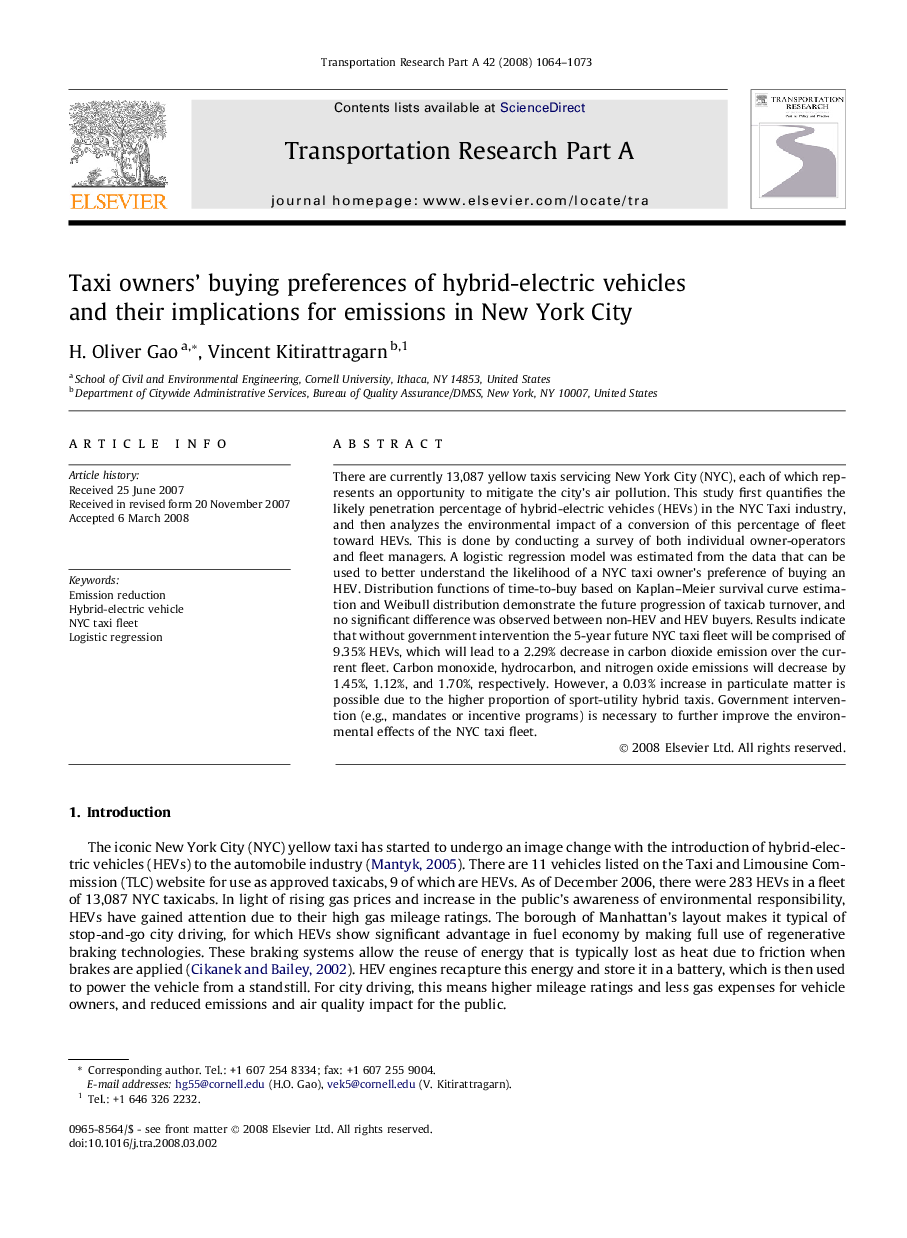| Article ID | Journal | Published Year | Pages | File Type |
|---|---|---|---|---|
| 311141 | Transportation Research Part A: Policy and Practice | 2008 | 10 Pages |
There are currently 13,087 yellow taxis servicing New York City (NYC), each of which represents an opportunity to mitigate the city’s air pollution. This study first quantifies the likely penetration percentage of hybrid-electric vehicles (HEVs) in the NYC Taxi industry, and then analyzes the environmental impact of a conversion of this percentage of fleet toward HEVs. This is done by conducting a survey of both individual owner-operators and fleet managers. A logistic regression model was estimated from the data that can be used to better understand the likelihood of a NYC taxi owner’s preference of buying an HEV. Distribution functions of time-to-buy based on Kaplan–Meier survival curve estimation and Weibull distribution demonstrate the future progression of taxicab turnover, and no significant difference was observed between non-HEV and HEV buyers. Results indicate that without government intervention the 5-year future NYC taxi fleet will be comprised of 9.35% HEVs, which will lead to a 2.29% decrease in carbon dioxide emission over the current fleet. Carbon monoxide, hydrocarbon, and nitrogen oxide emissions will decrease by 1.45%, 1.12%, and 1.70%, respectively. However, a 0.03% increase in particulate matter is possible due to the higher proportion of sport-utility hybrid taxis. Government intervention (e.g., mandates or incentive programs) is necessary to further improve the environmental effects of the NYC taxi fleet.
